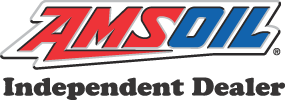 |
• Home | • Products | • Synthetics | • Amsoil Store |
| • FAQ | • Technology | • About Amsoil | ||
| • Get Dealer Pricing | ||||
Synthetic Oil Technology
|
AMSOIL Inc. was the first company in 1972 to come out with an API , SAE 100% Synthetic 10W40 motor oil. Since then AMSOIL has been the first with Synthetic 2-cycle oils, automatic transmission fluid, gear lube, diesel oils and more. In 1975 Mobil-1 introduced its first synthetics and very good products they are. Now, of course, companies such as Quaker State, Castrol, Pennzoil, Valvoline, Esso, and Shell have synthetic oils. One of the first questions most people ask is, What is a synthetic? Very simply, a petroleum lubricant is made up of long chain carbon molecules, just the way Mother Nature put them together. A Synthetic lubricant is made of short carbon chain molecules. The word 'synthetic' comes from synthesis, and by definition means the production of a substance by the union of chemical elements, groups or simpler compounds. Let's look at petroleum briefly. It comes from crude oil, which is refined into base stocks by separating molecules according to physical characteristics such as weight, and separates unwanted materials from desirable ones. These base stocks contain impurities of various types and amounts, such as wax crystals and sulphur compounds. These cause the base stocks to be less stable, providing molecular targets for heat and chemical degradation, hence, the short lifespan or duration of usage for petroleum oil. Petroleum lube manufacturers are trying to overcome some of the base stock limitations using sophisticated hydro-processing methods to make very high viscosity index oils. This creates a very paraffinic oil, which performs better in high heat and load parameters, but still has very poor cold pour or cold pumpability characteristics. Not good on those cold winter days. Even these VHVI oils still leave varnish and other engine deposits as compared to the pure synthetic base stock oils. These VHVI oils also are still less oxidatively stable than synthetics, which, of course, leads to the lube degrading quickly. The other limiting factor of petroleum oils is the additive package the petroleum manufactures are willing to design into their oils to keep them price-competitive for your (normal?) oil change of 5000 km for light vehicles. Or 100 to 250 hours for diesel farm tractors. Now, back to synthetics. Most of the base stock chemicals that go into blending synthetic lubricants are made from dibasic acid esters, polyol esters and polyalphaolefins. These are all built from short carbon chain molecules. A bit of technical trivia here. Mother Natures long carbon chain molecule has about 250 atom unions and is very elongated and many-branched in its structure. The synthetic short carbon chain molecule has only about seven atom unions and is very tightly packed and of very uniform construction. These points, I am told, are the molecular areas that are attacked by the forces of heat and physical load stresses, as well as chemical and other contaminants from combustion byproducts. This is one of the major factors that allow synthetics to outperform petroleum lubes. Of these synthetic base stocks, Polyalphaolefins offer about 240,000 different choices, while there are only about 120,000 different esters to choose from. So, you can see how a synthetic lubrication manufacturer can pretty well custom design an oil to do precisely what’s required of it. Following are some of the attributes or operating properties of synthetics over petroleum oils: Many viscosity grades available, high service temperature stability, low temperature flowability, high oxidative and thermal stability, excellent viscosity temperature behaviour (no thinning with high load and long use), very good seal compatibility, excellent friction reducer, hydrolytic stability (keeps rotating metal devices separated) , low toxicity, good biological degradation and excellent corrosion protection. Now that you have a properly blended custom-designed synthetic base stock, all you need is a more technically advanced additive package. This is another area where synthetics have it over petroleum oils. Because most synthetic manufacturers are designing a higher priced and performing oil, they tend to spend more money and put more effort into designing a superior additive package. This superior additive sets one oil apart from another in performance, such as friction reduction or fuel efficiency gain, temperature stability and elongation of oil drain. Here is a general list of the additives needed for a complete lubricant. Surface protective additives
Performance additives
Lubricant protective additives
There you have what makes a complete and superior operating synthetic lubricant that will:
|